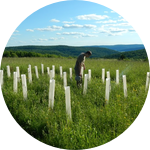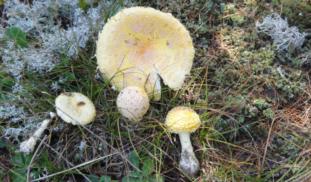Please wait...
About This Project
Mycorrhizae are fungi that live in the soil and form partnerships with plants, providing hard-to-find nutrients like nitrogen and phosphorus in exchange for sugar. Plants that rely on mycorrhizae tend to perform poorly in areas where their partners are not present. This project's goal is to test whether establishing mycorrhizae on American chestnut seedlings in the lab can improve their growth and survival in the field.
More Lab Notes From This Project

Browse Other Projects on Experiment
Related Projects
Using eDNA to examine protected California species in streams at Hastings Reserve
Hastings Reserve is home to three streams that provide critical habitat for sensitive native species. Through...
City smart: Are cities making birds smarter?
One cannot go to Florida and miss the White Ibises roaming golf, park and private lawns. But how does a...
How do polar bears stay healthy on the world's worst diet?
Polar bears survive almost entirely on seal fat. Yet unlike humans who eat high-fat diets, polar bears never...


